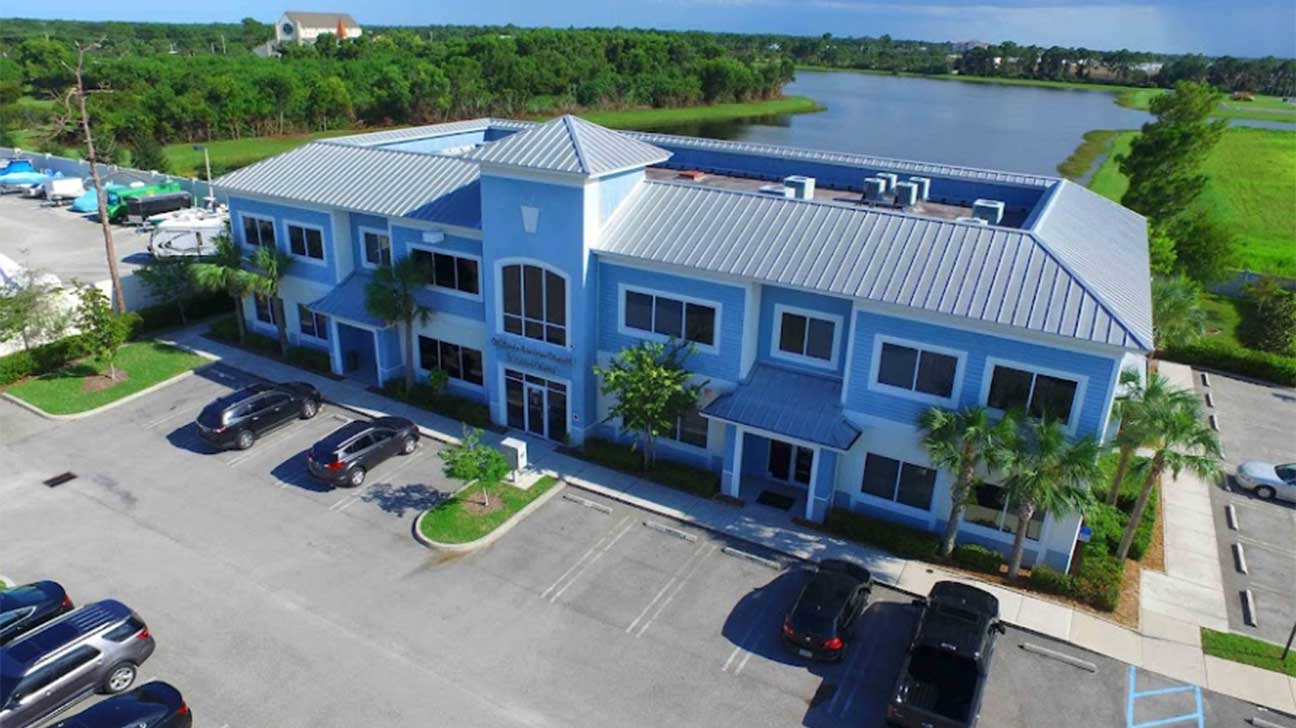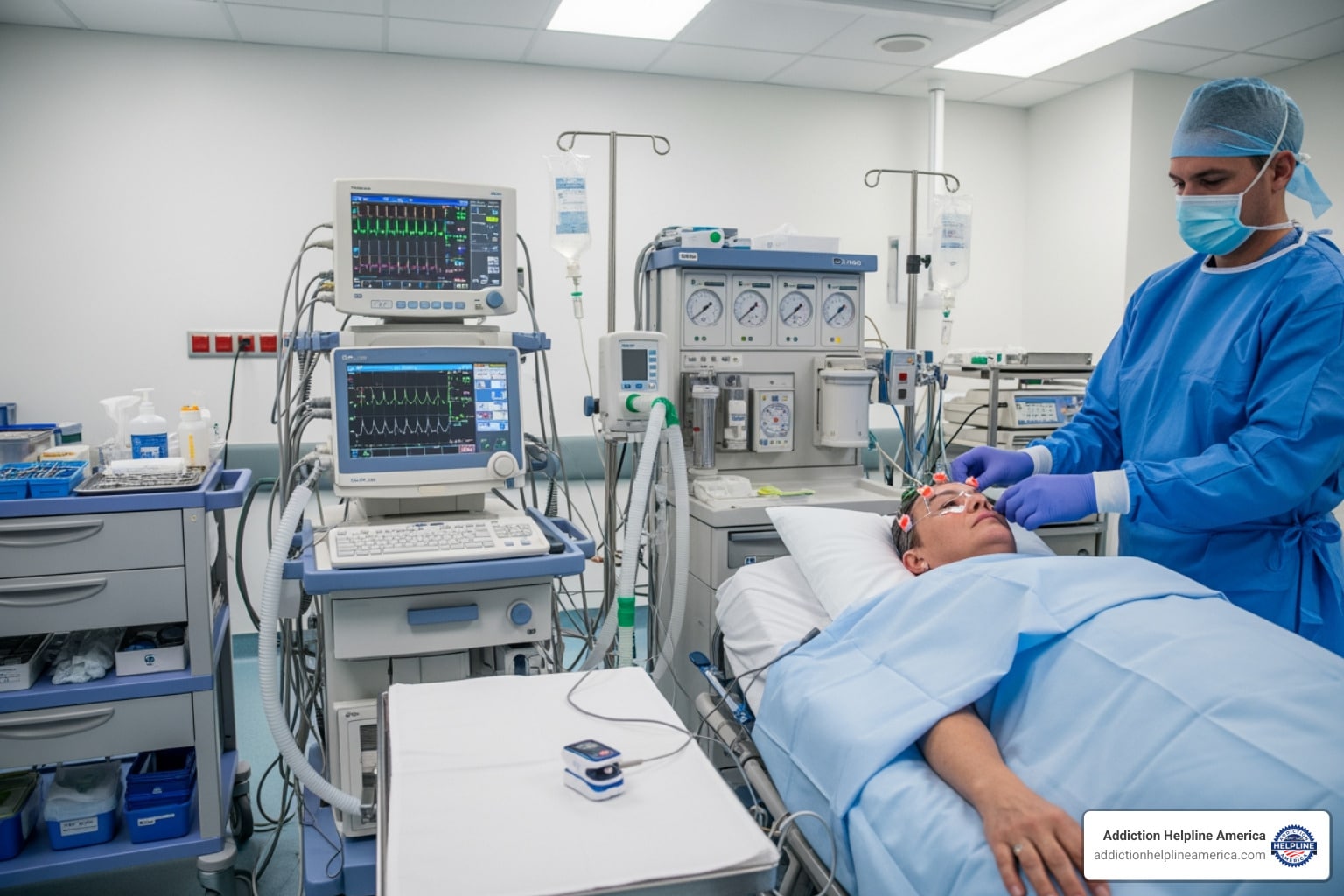
Understanding Electro Shock Therapy as a Treatment Option
Electro shock therapy for depression, formally known as Electroconvulsive Therapy (ECT), is a medical procedure that uses controlled electrical currents to induce a brief seizure in the brain while a patient is under general anesthesia. It is most commonly used for severe, treatment-resistant depression.
Quick Facts About ECT for Depression:
- What it is: A medical procedure using small electrical currents to trigger a brief, controlled seizure in the brain
- Success rate: 70-90% of patients show improvement; 50-60% achieve full remission
- Treatment course: Typically 6-12 sessions over 2-4 weeks
- Primary use: Severe, treatment-resistant depression, acute suicidality, or when rapid response is needed
- Safety: Performed under general anesthesia with muscle relaxants; very low risk when properly administered
- Side effects: Temporary confusion, short-term memory loss, headache, muscle aches
Despite its effectiveness, ECT is often misunderstood due to outdated media portrayals. Modern ECT is a safe, controlled procedure performed with anesthesia, precise electrical dosing, and comprehensive monitoring, bearing little resemblance to its early history.
ECT works faster than antidepressant medications, often providing relief after a few sessions, which can be life-saving for individuals with severe suicidal thoughts. It is a crucial option when other treatments have failed, when a rapid response is critical, or when medications pose risks, such as during pregnancy. While not a first-line treatment, ECT is a vital tool for the most severe forms of depression.
At Addiction Helpline America, we help individuals with severe depression and co-occurring substance use disorders learn about all available treatment options, including electro shock therapy for depression. We connect people with comprehensive mental health programs that address both addiction and underlying psychiatric conditions.

Essential electro shock therapy for depression terms:
Understanding Electroconvulsive Therapy (ECT)
What is ECT and How Does It Work?
Electro shock therapy for depression, or Electroconvulsive Therapy (ECT), is a controlled medical procedure performed under general anesthesia. A small electrical current passes through the brain to trigger a brief, therapeutic seizure lasting 20 to 60 seconds. Muscle relaxants are used, so the body remains still, and the patient feels nothing.
While the exact mechanisms are still being studied, the induced seizure appears to reset brain chemistry. It influences neurotransmitters like serotonin and dopamine, which are often imbalanced in depression. It may also regulate hormones involved in the body’s stress response.
ECT also promotes neuroplasticity—the brain’s ability to form new connections. Research shows it can encourage cell regeneration, particularly in the hippocampus, a region vital for mood and memory. These changes work together to alleviate severe depression. For a deeper look, you can explore how electroconvulsive therapy works in the treatment of depression.
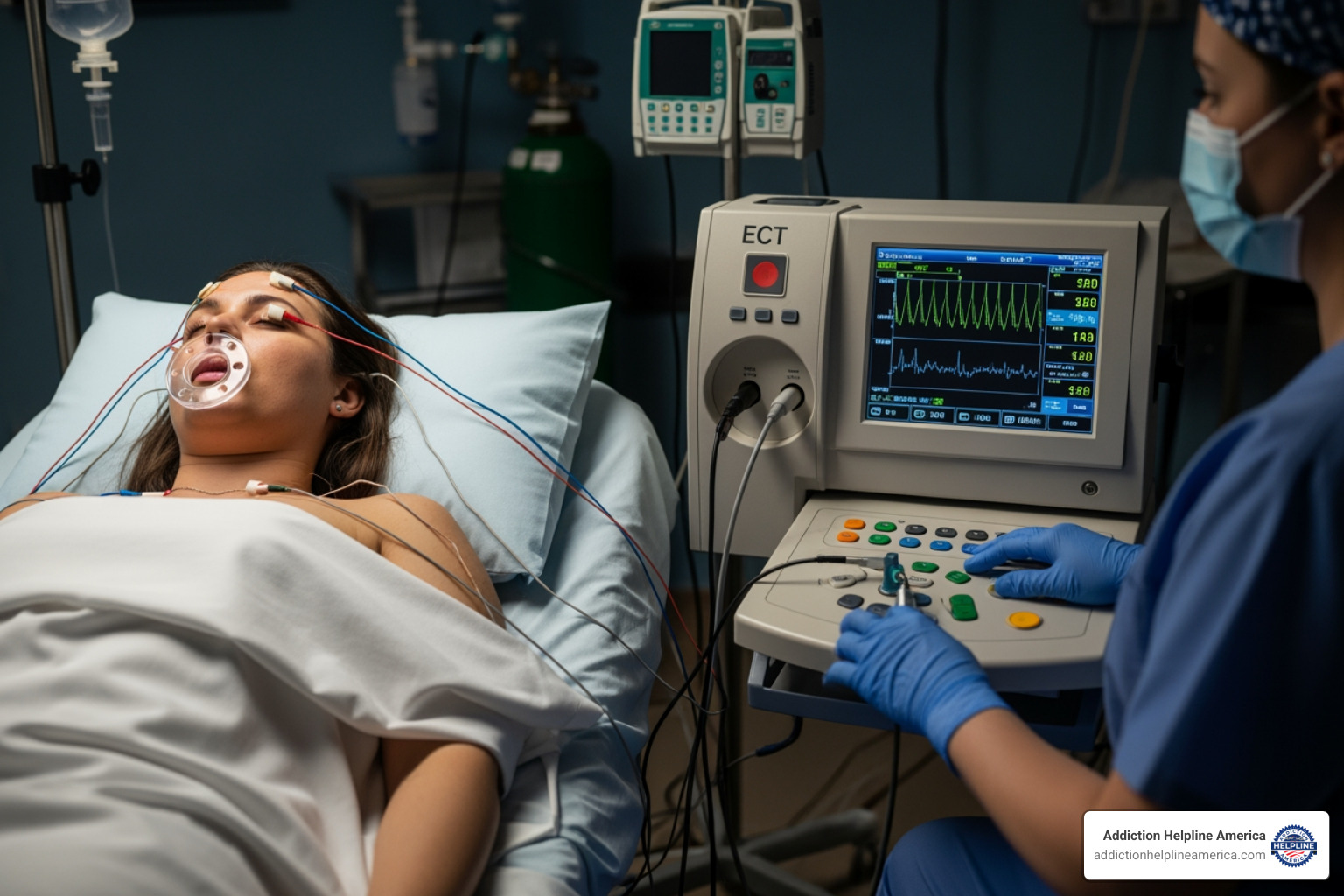
The History and Evolution of ECT
ECT has evolved dramatically since its introduction in the 1930s by Ugo Cerletti and Lucio Bini. Early methods were crude, performed without anesthesia or muscle relaxants, leading to traumatic experiences and injuries. This history created a frightening public image, reinforced by films like “One Flew Over the Cuckoo’s Nest,” that does not reflect modern practice.
Today’s ECT is a completely different procedure. General anesthesia ensures the patient is asleep and feels no pain. Muscle relaxants prevent convulsions and injuries. Modern devices deliver controlled, precise electrical stimulation custom to each patient. Throughout the treatment, a medical team monitors brain activity (EEG), heart function (ECG), and other vital signs, following strict safety protocols. Modern electro shock therapy for depression is a sophisticated and compassionate medical procedure.
Who is a Candidate for ECT?
ECT is typically considered when other treatments have failed or when a rapid response is needed. It is a primary treatment for:
- Severe major depression, especially with psychotic features, that makes daily functioning impossible.
- Treatment-resistant depression, where multiple medications and therapies have not provided relief.
- Bipolar disorder, for both severe manic and depressive episodes.
- Catatonia, a state of unresponsiveness that can lead to serious medical complications.
- Schizophrenia with severe psychotic symptoms that are resistant to medication.
ECT’s rapid action is life-saving when a person is actively suicidal, self-harming, or refusing to eat or drink. It is also a preferred option for individuals who have responded well to it in the past. Because many psychiatric medications pose risks during pregnancy, ECT is a safer alternative for pregnant individuals with severe depression. Similarly, older adults who are sensitive to medication side effects often tolerate ECT well and see significant benefits. Before recommending electro shock therapy for depression, doctors conduct a thorough medical and psychiatric evaluation to ensure the benefits outweigh the risks.
The Benefits and Effectiveness of Electro Shock Therapy for Depression
How Effective is ECT for Severe Depression?
Electro shock therapy for depression is one of the most effective treatments available for severe and treatment-resistant cases. The results are compelling: 70% to 90% of patients report significant improvement in their symptoms, and 50% to 60% achieve full remission. This includes many individuals for whom multiple antidepressants and therapies were unsuccessful.
A key advantage of ECT is its speed. While antidepressants can take six weeks or more to work, many ECT patients notice meaningful improvement after just a few sessions. This rapid response can be life-saving for someone in acute crisis or with severe suicidal thoughts. Clinical evidence consistently shows that for severe major depression, ECT produces substantial improvement in approximately 80% of patients. You can explore more scientific research on ECT effectiveness to understand its proven outcomes.

Key Benefits of Choosing ECT
For those facing severe depression, ECT offers unique and powerful advantages.
-
Rapid Action in a Crisis: For someone with severe suicidal thoughts or catatonia, waiting weeks for medication to work is not an option. ECT can provide relief within days, quickly reducing the immediate risk of suicide and self-harm.
-
High Success for Treatment-Resistant Cases: About one-third of people with major depression do not respond to multiple medications. ECT works for the majority of these individuals, offering hope when other treatments have failed.
-
Safety for Vulnerable Populations: ECT is a safe alternative for pregnant women who must avoid certain medications. It is also well-tolerated by elderly patients who may be sensitive to medication side effects.
-
Life-Saving Potential: By rapidly alleviating severe symptoms, including suicidal ideation, ECT literally saves lives. The mortality rate associated with modern ECT is extremely low—approximately 2.1 per 100,000 treatments—comparable to minor surgical procedures. This reflects the high safety standards of today’s treatment.
At Addiction Helpline America, we connect individuals struggling with severe depression and co-occurring substance use disorders to comprehensive treatment programs. We can help you explore if electro shock therapy for depression is an appropriate part of your recovery journey.
The ECT Procedure: What to Expect Before, During, and After
Understanding the modern ECT procedure can help ease concerns. The process is carefully designed for safety and comfort.
Preparing for Your ECT Session
Before your first session, your medical team will conduct a thorough evaluation to ensure ECT is right for you.
- Medical Evaluation: This includes a psychiatric assessment to confirm your diagnosis, a full physical exam, blood tests, and an electrocardiogram (EKG) to check your heart health.
- Informed Consent: Your team will explain the procedure, benefits, risks, and alternatives. You will have ample time to ask questions before providing written consent. State laws have provisions for consent if a patient cannot make their own decisions.
- Fasting: You will be instructed not to eat or drink anything after midnight the night before your procedure.
- Personal Arrangements: As an outpatient, you must have a responsible adult drive you to and from the session and stay with you for 24 hours afterward.
During the ECT Treatment
The ECT procedure itself is brief, taking only 5 to 10 minutes in a hospital or specialized clinic. A team including a psychiatrist, an anesthesiologist, and nurses will care for you.
Once in the treatment room, an IV line is placed to administer a short-acting general anesthetic and a muscle relaxant. You will be completely asleep and feel no pain, and the relaxant prevents muscle contractions and injury.
Your vital signs are continuously monitored. Electrodes on your head record brain activity (EEG), while other monitors track your heart rate, blood pressure, and oxygen levels. A mouth guard protects your teeth.
Small electrodes are then attached to your scalp in either a unilateral (one side) or bilateral (both sides) placement, chosen to maximize benefits and minimize side effects. A carefully measured electrical current is delivered, inducing a controlled seizure that lasts 20 to 60 seconds. Your body remains still due to the muscle relaxant.
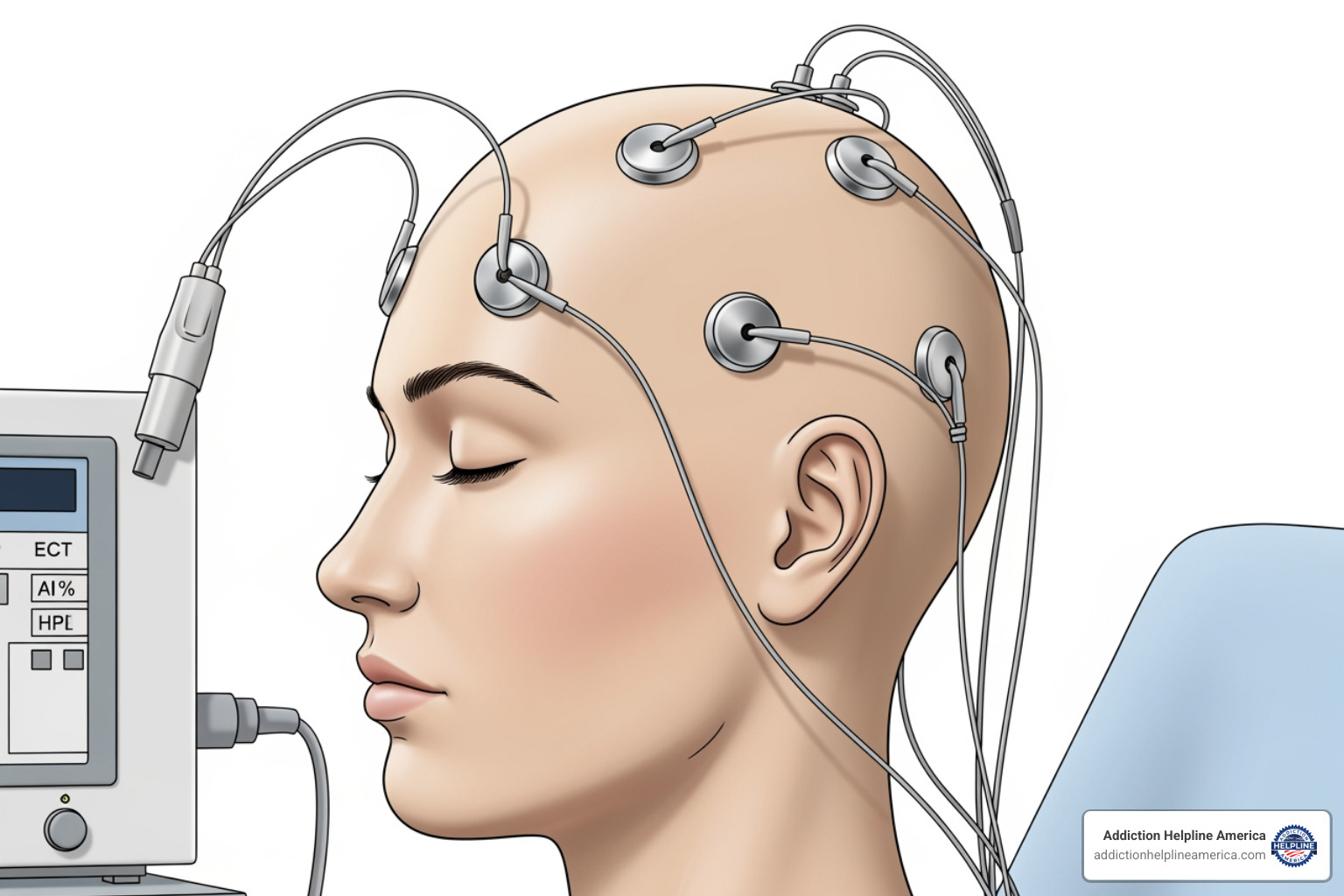
Recovery and Post-Treatment Care
After the stimulus, you will be moved to a recovery area where you will wake up within 5 to 10 minutes. It is normal to feel groggy or confused for a short period. You may also experience a mild headache, nausea, or muscle aches, which can be treated with medication.
A typical course of electro shock therapy for depression involves 6 to 12 sessions, given two to three times a week. After this acute phase, your doctor may recommend maintenance ECT (e.g., monthly) to prevent relapse.
Ongoing care is crucial for long-term wellness. This often includes continuing antidepressant medications and psychotherapy like Cognitive Behavioral Therapy (CBT). For your safety, you should not drive or make important decisions for 24-48 hours after each treatment.
At Addiction Helpline America, we connect you with comprehensive programs that address both mental health and addiction. We can help you steer treatment options for severe depression and find the right path to recovery.
Risks, Side Effects, and Modern Alternatives
Like any medical procedure, electro shock therapy for depression has potential risks and side effects. However, modern ECT is remarkably safe, and understanding these aspects is key to making an informed decision.
Understanding the Risks and Side Effects of electro shock therapy for depression
Most side effects of ECT are mild and temporary.
-
Common Physical Side Effects: Immediately after treatment, some people experience headache, nausea, muscle aches, or jaw pain. These usually respond to over-the-counter medication and fade within hours. Short-term confusion upon waking is also common but typically clears within an hour.
-
Memory Changes: This is a primary concern for many. Anterograde amnesia, or difficulty remembering new information during the treatment course, is possible but usually improves within weeks after treatment ends. Retrograde amnesia, or difficulty recalling past events, is less common and typically partial. In rare cases, some memory gaps may be permanent. Modern techniques, such as right unilateral electrode placement and ultra-brief pulses, are used to significantly minimize these memory effects.
-
Medical Risks: Anesthesia carries small risks, as with any procedure. ECT can cause temporary changes in heart rate and blood pressure, which is why cardiovascular function is closely monitored. Serious complications are very rare. The mortality rate for ECT is about 2.1 deaths per 100,000 treatments, a risk level comparable to minor surgery. For many with life-threatening depression, these manageable risks are outweighed by the potential for rapid, profound relief. For more details, the Mayo Clinic offers a comprehensive guide on electroconvulsive therapy.
Comparing ECT to Other Brain Stimulation Therapies
ECT is not the only brain stimulation therapy available. It’s helpful to compare it with other options like Transcranial Magnetic Stimulation (TMS) and Vagus Nerve Stimulation (VNS).
-
Transcranial Magnetic Stimulation (TMS): This is a non-invasive treatment where an electromagnetic coil placed on the scalp delivers magnetic pulses to mood-regulating brain areas. The patient is awake, and no anesthesia is required. TMS is FDA-approved for treatment-resistant depression and has milder side effects, like headaches. However, it is generally less effective and works more slowly than ECT.
-
Vagus Nerve Stimulation (VNS): This involves surgically implanting a pacemaker-like device in the chest that sends electrical pulses to the brain via the vagus nerve. VNS is used for long-term management of treatment-resistant depression but can take many months to show effects, making it unsuitable for acute crises. Side effects can include voice changes and coughing, and it carries surgical risks.
How ECT Compares: ECT is more invasive than TMS but less so than VNS. It offers the highest response rates (70-90%) and works the fastest, making it the gold standard for severe, life-threatening depression. The choice between these therapies depends on the severity of depression, treatment history, and the need for rapid relief. The National Institute of Mental Health provides a helpful overview of brain stimulation therapies.
At Addiction Helpline America, our team can help you understand these options and connect you with comprehensive care for both mental health and addiction.
Frequently Asked Questions about Electroshock Therapy
Considering electro shock therapy for depression naturally brings up questions. Here are answers to some of the most common concerns.
Is ECT painful?
No, ECT is not painful. The procedure is performed while you are completely asleep under general anesthesia. You will not feel the electrical stimulus or the resulting seizure. After waking, some people experience mild, temporary discomfort like a headache or muscle aches, which can be easily managed with over-the-counter pain relievers.
Does insurance cover electro shock therapy for depression?
Yes, in most cases, insurance covers ECT. It is recognized as a medically necessary treatment for severe mental health conditions. Most major commercial plans, as well as government programs like Medicare and Medicaid, provide coverage. However, specifics like deductibles and co-pays vary by plan. Your provider may require pre-authorization, where your treatment team submits documentation to confirm medical necessity. It is always best to contact your insurance company directly to understand your benefits. The facility’s billing department can also assist you.
Does ECT cause brain damage?
No, modern ECT does not cause brain damage. This is a persistent myth, but decades of scientific research and neuroimaging studies (MRI, PET scans) have found no evidence that ECT harms brain structure. In fact, research suggests ECT promotes positive changes, such as neurogenesis (the growth of new brain cells) and improved brain connectivity, which are believed to contribute to its therapeutic effects.
The temporary memory loss some patients experience is a side effect, not a sign of brain damage. These cognitive effects typically improve in the weeks and months following treatment. Modern safety protocols and techniques are specifically designed to maximize benefits while minimizing these side effects. For more on ECT’s safety, you can refer to resources from the Mayo Clinic.
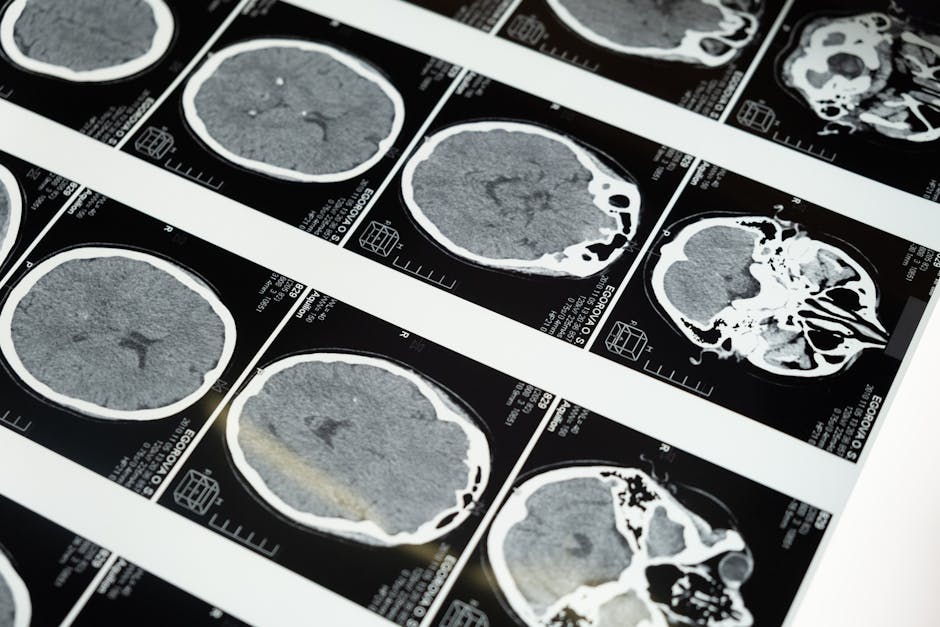
Conclusion: Is ECT the Right Choice for You?
Deciding on a mental health treatment can be difficult, especially while battling severe depression. Electro shock therapy for depression is a powerful, safe, and refined medical procedure that offers significant hope when other treatments have failed.
We’ve seen that modern ECT is a controlled procedure with high success rates (70-90% improvement) and works much faster than medication. It is a vital tool, but it is not a first-line treatment. ECT is typically recommended for severe, treatment-resistant depression, acute suicidal crisis, or for individuals who cannot tolerate medications, such as during pregnancy.
The decision to pursue electro shock therapy for depression must be a personal one, made in close consultation with a psychiatrist. They will evaluate your health history, discuss all options, and help you weigh the benefits and risks for your unique situation.
If you are facing severe depression, especially if it co-occurs with substance use, you are not alone. At Addiction Helpline America, we provide free, confidential guidance to help you explore your treatment options and connect with the right care.
Our nationwide network of treatment centers specializes in dual diagnosis, addressing both mental health and addiction. Whether you are considering ECT or seeking other forms of comprehensive care, we can help you take the next step toward recovery.
Our helpline is 100%
free & confidential
If you or someone you care about is struggling with drug or alcohol addiction, we can help you explore your recovery options. Don’t face this challenge alone—seek support from us.
Programs
Resources
Will my insurance
cover addiction
treatment?
We're ready to help
Find the best
drug or alcohol treatment
center
Are you or a loved one struggling with addiction? Call today to speak to a treatment expert.


